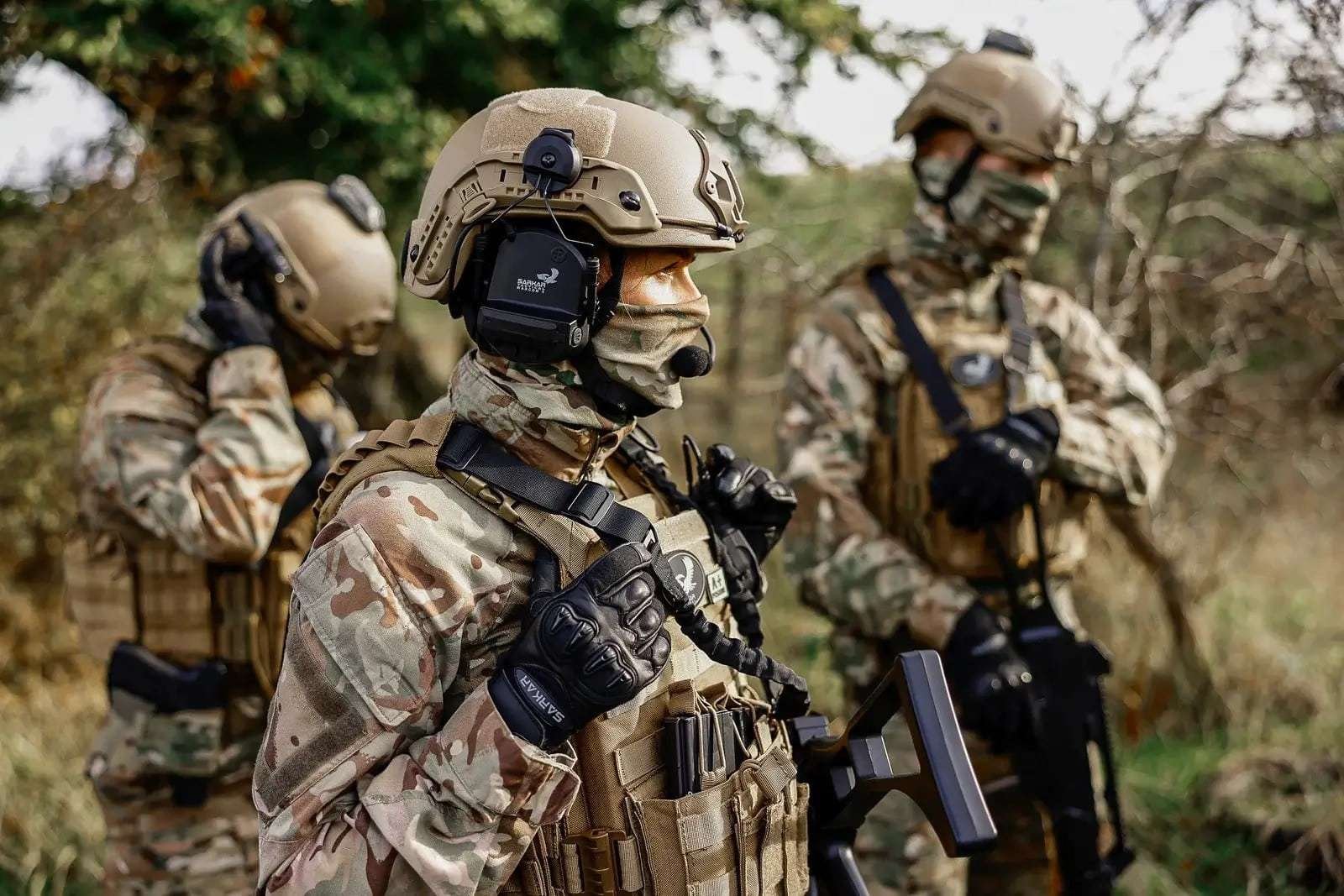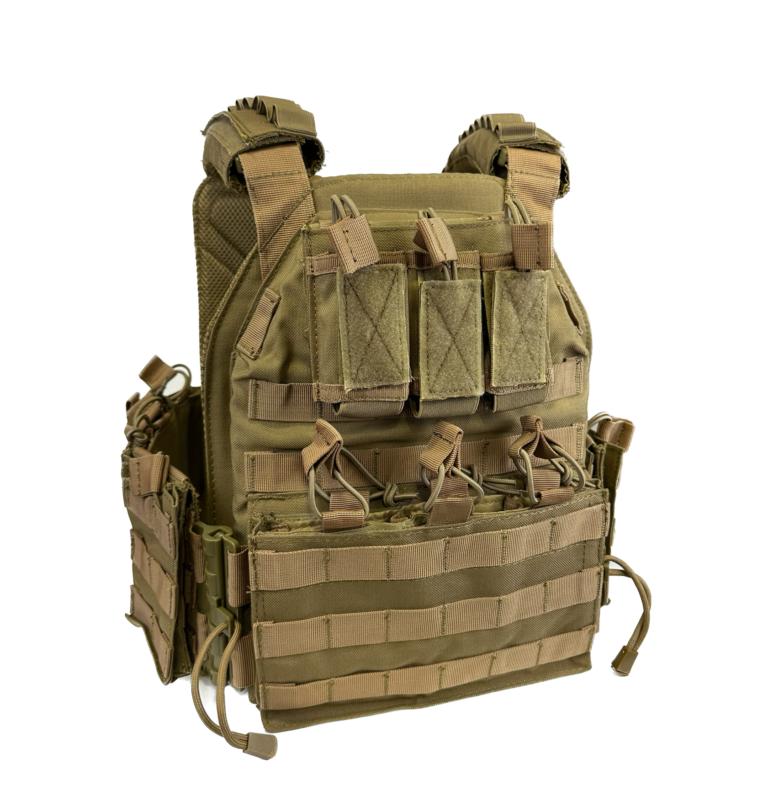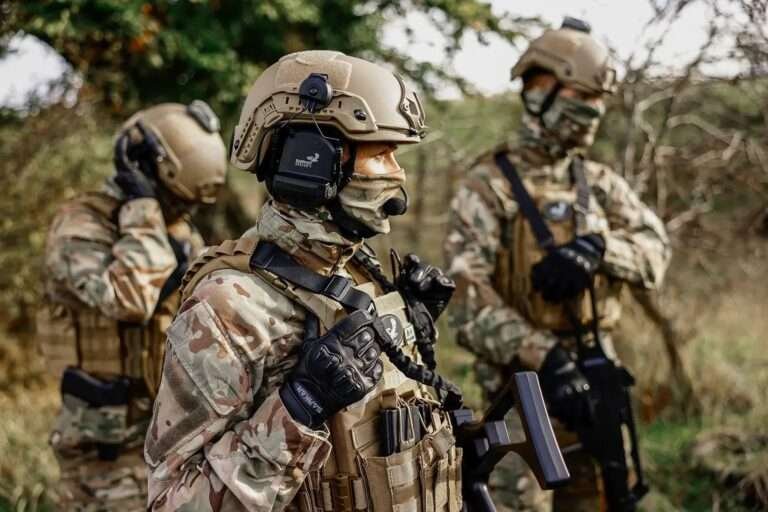Plate carriers are a type of tactical vest with a protective insert that allows for the insertion of ballistic plates. They serve the same purpose as a traditional bulletproof vest, however, plate carriers are generally much lighter than a ballistic vest. This is due to the option for customisable body coverage.
Plate carriers have become popular in recent years. They are utilized by modern-day militaries, alongside special forces operators and armed response units.
In this article from the body armor experts at Sarkar Tactical, we analyze the components of a plate carrier, why they are used and which plates are used with them.
Table of Contents
- Components of a Plate Carrier
- The Different Plates Used in Plate Carriers
- Why is the use of Plate Carriers Popular?
- How Should a Plate Carrier Fit?
- What Accessories may Professionals Attach to Plate Carriers?
- Conclusion: The Role of Plate Carriers in Personal Protection
- Plate Carriers at Sarkar Tactical
Components of a Plate Carrier
A plate carrier is a specialized vest designed to hold ballistic plates. These plates are often made from materials like ceramic, steel, or composite materials. They are designed to stop bullets and other ballistic threats in their tracks.
There are several other components that make up a plate carrier:
Front Panel

The front panel of a plate carrier is the central part of the vest that houses the primary ballistic plate. It is strategically positioned to protect vital organs, such as the heart and lungs.
Back Panel
The back panel typically holds another ballistic plate to provide complete front and back protection.
Shoulder Straps
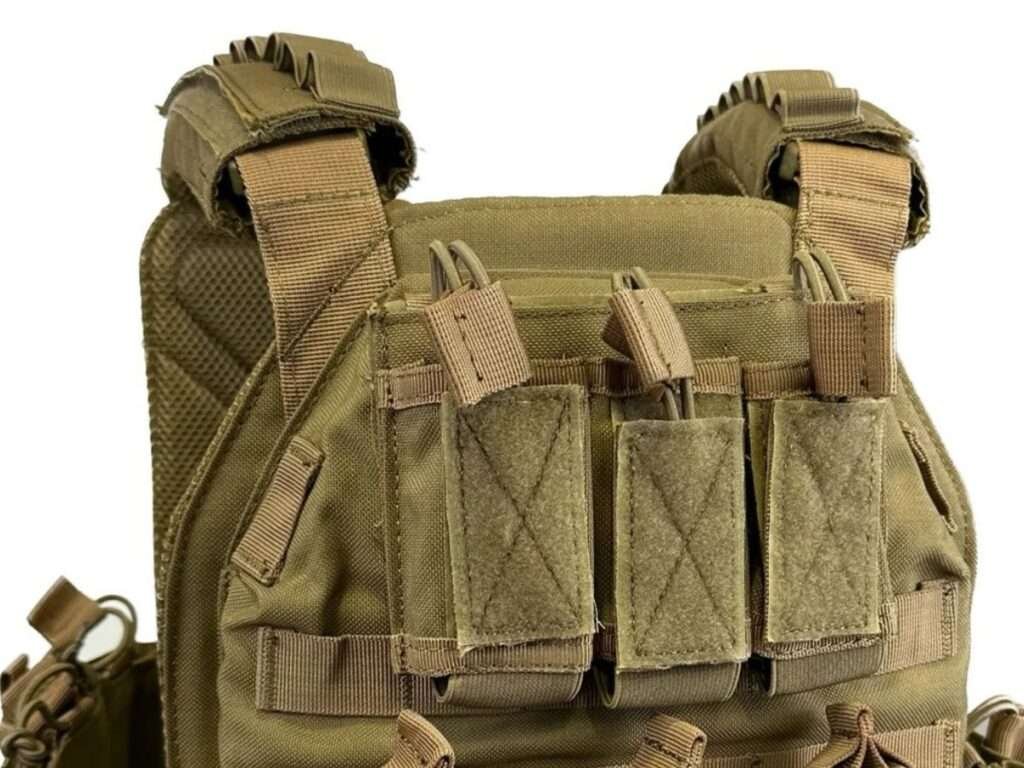
These straps are worn over the shoulders and play a crucial role in evenly distributing the weight of the plate carrier. Proper adjustment ensures comfort and stability during use.
MOLLE System
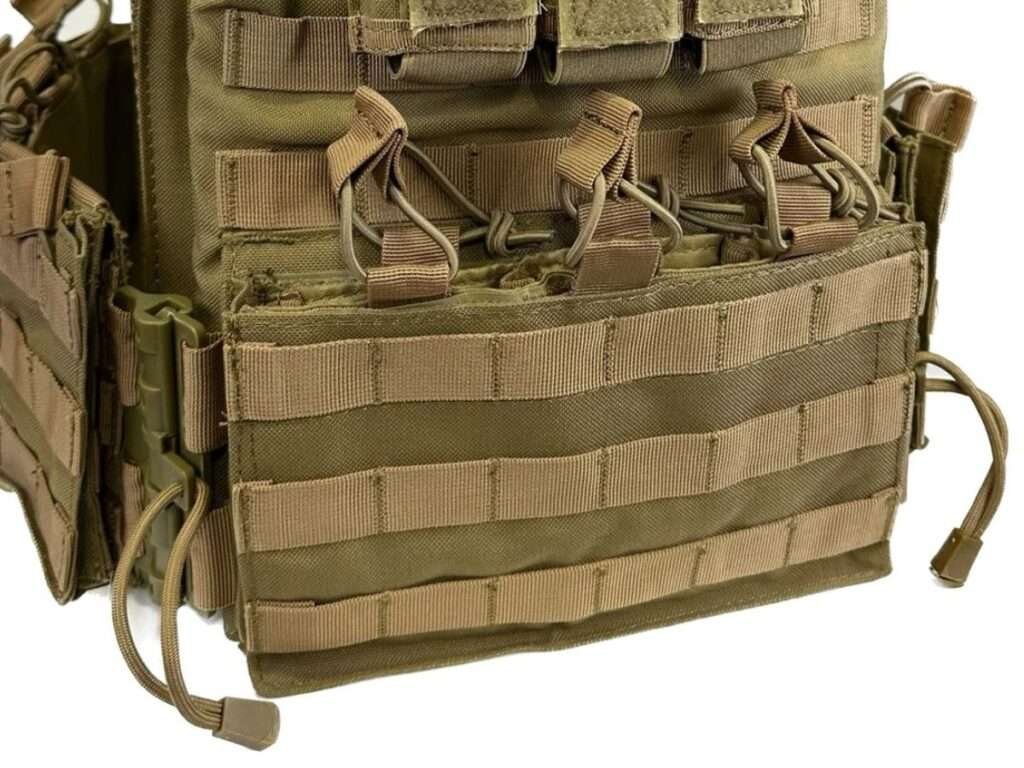
The MOLLE (Modular Lightweight Load-carrying Equipment) system consists of webbing and loops on the plate carrier. It allows you to attach various pouches and accessories for customization and convenience.
The Different Plates Used in Plate Carriers

Ballistic plates are the bulwark against ballistic threats and play a significant role in personal safety. Understanding the different types of plates used in plate carriers is essential to make the right decisions about your protective gear.
Learn about the different levels of body armor used in plate carriers.
There are primarily two categories of plates commonly used in plate carriers:
Soft Armor Plates
Soft armor plates are often made from materials like Kevlar or Dyneema. They are designed to provide protection against pistol rounds, fragmentation, and other low-velocity threats. These plates are relatively lightweight and flexible. This can make them suitable for situations where agility and mobility are required.
Soft armor plates are effective at absorbing and dispersing the energy from incoming projectiles. This can lead to a reduced risk of injury. They are commonly used by police officers and security personnel.
Hard Armor Plates
Hard armor plates are constructed from rigid materials such as ceramic, steel, or composite materials. These plates are engineered to stop high-velocity rifle rounds. They offer a higher level of protection than soft armor plates. They are heavier and less flexible but provide defense against higher velocity ballistics.
Composite Plates
Composite plates combine different materials to offer a balance between weight and protection. They are often designed to be lighter than steel while still providing the required stopping power.
Steel Plates
Steel plates are known for their durability and resilience. They can withstand multiple hits without losing their protective capabilities. They tend to be heavier than ceramic alternatives.
Ceramic Plates
Ceramic plates are used due to their ability to shatter incoming projectiles upon impact. This is done by dispersing the energy and preventing penetration. They are relatively lightweight compared to steel plates. They are a preferred choice for many professionals.
Why is the use of Plate Carriers Popular?
Plate carriers have become more widely used in militaries. The surge in demand can be attributed to several factors.
Plate carriers provide effective ballistic protection. They are reliable against a wide range of threats, including pistol rounds and high-velocity rifle rounds. Plate carriers also allow for easy customization. They feature MOLLE webbing and attachment points, which allow professionals to tailor their equipment to the needs of any operation.
Modern plate carriers have also been engineered with mobility and ergonomics as a key focus. They distribute the weight of the armor evenly. This reduces the strain on the wearer. Adjustable straps and padding also enhance comfort.
Plate carriers are versatile armor systems that can accommodate various types of plates. This versatility allows users to adapt their level of protection based on the perceived threat level.
How Should a Plate Carrier fit?
A correctly fitted plate carrier is important for comfort and keeping you safe.
It’s essential to start by selecting the appropriate size based on the manufacturer’s sizing chart. The front and back panels should provide comprehensive coverage of your chest, upper back, heart, lungs, and spine while maintaining a snug fit. The shoulder straps should rest comfortably on your shoulders without causing discomfort or digging into your skin. Ensure they’re of equal length to keep the plate carrier level on your torso. The cummerbund should be adjusted to fit securely without excessive tightness.
Test your range of motion. Make sure you can move freely, bend, and lift your arms without the carrier riding up. Assess whether the carrier allows for comfortable and unrestricted breathing.
It’s crucial that the ballistic plates within the carrier are correctly positioned to cover vital organs.
Learn how to set up a plate carrier correctly.
What Accessories may Professionals Attach to Plate Carriers?
The specific accessories attached to a plate carrier can vary depending on the profession, mission, and personal preferences of the user. Below are some accessories you may generally find attached to a plate carrier:
- Magazine Pouches: These pouches securely hold extra ammunition magazines. They ensure quick and easy access during firearm engagements.
- Medical Kits: Medical pouches or Individual First Aid Kits carry essential medical supplies. They include bandages, tourniquets, and hemostatic agents, to address injuries in the field.
- Communication Gear: Radio pouches, or cable management systems, allow professionals to carry and manage communication equipment. This includes radios and earpieces.
- Hydration Systems: Integrated hydration pouches or hydration carriers allow for hands-free access to water.
- Admin Pouches: These pouches typically feature compartments for organizing tools, notepads, pens, and other administrative items.
Find out more about tactical gear.
Conclusion: The Role of Plate Carriers in Personal Protection
The effectiveness of a plate carrier comes down to the design, and it being fitted properly.
A properly fitted plate carrier offers personal protection. Ensuring not only the safety of vital organs but, also the comfort and mobility necessary for dynamic situations.
Plate carriers offer a comprehensive defense against a range of ballistics. From pistol rounds to high-velocity rifle projectiles. Their customization options and adaptability make them indispensable tools for professionals in the military. Whether you’re an experienced armed professional or an individual focused on personal safety, understanding the significance of plate carriers and their proper fit is essential.
Plate Carriers at Sarkar Tactical
When choosing protective armor, you cannot compromise. Make sure you are prepared with the industry’s most advanced equipment. At Sarkar Tactical, we craft specialist, high-performance plate carriers and tactical gear that meets the requirements of military personnel and special forces.
Sarkar Tactical protects its customers in the most challenging environments. Contact us for more information, or view the rest of our blog section to learn more from our expert team.

